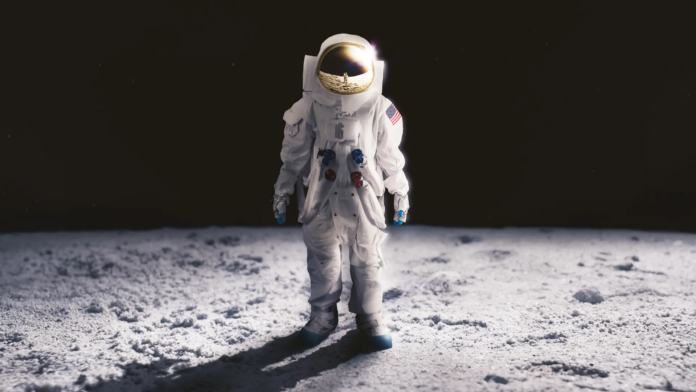As humanity ventures deeper into space exploration, one phenomenon has captivated researchers and challenged our understanding of time: clocks tick faster on the Moon than on Earth. This remarkable insight into gravitational physics sheds light on how timekeeping varies across different celestial environments. With NASA actively planning sustainable human settlements on the Moon, understanding and adapting to these variations is more critical than ever.

How Moon Clocks Tick Faster?
According to a study published in The Astronomical Journal, a clock on the Moon gains 56.02 microseconds per daycompared to a clock on Earth. This time difference is explained by Einstein’s theory of general relativity, which states that time is affected by gravity. On the Moon, the gravitational pull is weaker—about one-sixth of Earth’s—causing time to pass slightly faster.
The study also focused on how time behaves at Lagrange Points, which are gravitationally balanced regions between the Earth and the Moon. These points serve as key locations for space exploration, offering stable positions for spacecraft to operate efficiently. Understanding time discrepancies at these points is essential for precise navigation and communication in space.
Why Lagrange Points Matter For Space Missions?
Lagrange Points, named after the Italian-French mathematician Joseph-Louis Lagrange, are areas in space where the gravitational forces of two celestial bodies, such as Earth and the Moon, balance out. There are five such points (L1 through L5), and they are indispensable for space missions.
- Strategic Navigation:
Spacecraft traveling between Earth and the Moon often use these points as rest stops or staging areas. They save fuel by remaining in these gravitationally stable zones and allow for smoother transitions between orbits. - Accurate Communication:
Lagrange Points are also critical for maintaining uninterrupted communication with Earth. As time behaves differently due to gravitational variations, reliable and precise clocks help overcome signal delays caused by distance and gravity, ensuring seamless communication. - Collision Avoidance:
Time synchronization at these points aids spacecraft in coordinating their movements with planetary orbits, minimizing the risk of collisions during space maneuvers.
The Impact Of Time Discrepancies On Space Exploration
The discovery of faster lunar clocks is more than a theoretical curiosity—it has profound implications for future space exploration. As space agencies like NASA and ESA (European Space Agency) plan long-term missions to Mars, the Moon, and beyond, understanding how time differs across celestial bodies becomes essential for several reasons:
- Enhanced Mission Coordination:
Variations in time can affect how spacecraft communicate and coordinate with mission control. Accurate timekeeping ensures that signals between Earth and spacecraft remain synchronized, avoiding costly delays or errors. - Precise Navigation:
Interplanetary travel relies on precise timing to calculate trajectories and orbital maneuvers. A slight miscalculation caused by ignoring time differences could result in mission failures or missed landings. - Scientific Advancements:
Understanding time discrepancies helps researchers study fundamental physics, including the relationship between gravity and time. These insights deepen our knowledge of the universe and improve technologies for future missions.
Preparing For A Standardized “Moon Time”
With NASA aiming to establish lunar bases, creating a standardized “Moon Time” is becoming a pressing need. Unlike Earth, where time zones are based on longitude, the Moon’s unique gravitational and orbital characteristics call for an entirely new time system.
- Atomic Clocks In Space:
Scientists are exploring the use of atomic clocks, which are ultra-precise and capable of maintaining accuracy even in challenging environments. These clocks could become the standard for lunar operations, ensuring consistency across scientific experiments, communication, and navigation. - Seamless Earth-Moon Synchronization:
For astronauts and researchers living on the Moon, synchronizing their schedules with Earth’s time zones will be vital. This synchronization will ensure efficient collaboration between Earth-based mission control and lunar operations. - Adaptation For Lunar Day-Night Cycles:
The Moon experiences day and night cycles lasting about 14 Earth days each. A new time system must account for these extended periods, balancing human circadian rhythms and operational needs.
From The Moon To Mars: Broader Implications For Space Exploration
As humanity sets its sights on Mars and other celestial bodies, the lessons learned from lunar timekeeping will play a crucial role in shaping interplanetary missions. The time differences experienced on the Moon are expected to be even more pronounced on planets like Mars, where gravitational forces and orbital dynamics differ significantly from Earth.
- Mars Time Challenges:
A day on Mars, called a “sol,” is approximately 24 hours and 39 minutes. Understanding and adjusting to such differences will be key for Mars colonization efforts. - Universal Space Time Standard:
Scientists may eventually develop a universal time standard for space exploration, ensuring consistency across missions to different planets and moons. This standard could revolutionize how we approach navigation, communication, and research in space. - Collaborative Efforts:
International space agencies are likely to collaborate on these challenges, pooling resources and expertise to create solutions that benefit all of humanity’s space endeavors.
A New Era Of Space Exploration
The discovery that clocks tick faster on the Moon underscores the complexity and wonder of exploring the cosmos. It serves as a reminder of the challenges and opportunities that await as humanity steps further into the universe. From redefining timekeeping to unraveling the mysteries of gravity and relativity, every step brings us closer to understanding our place in the cosmos and unlocking the limitless potential of space exploration.

